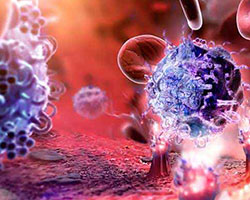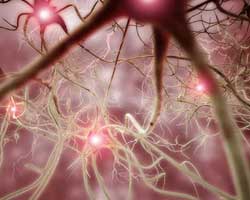
| Therapeutic Area(s) | Immunology |
T-cell immunotherapy comprises T-cell receptor (TCR), tumor-infiltrating lymphocyte (TIL), and chimeric antigen receptor (CAR) T-cell therapy. TCR is an integral membrane protein that initiates T-cells response to an antigen.

| Therapeutic Area(s) | Others |
Vitamins are nutrients that are required for the growth of the body. Based on its solubility, vitamins are categorized into two types: fat soluble vitamins, and water-soluble vitamins. Vitamins have a variety of function in the body, such as vitamin A improves eye sight, vitamin D is essential for bone growth and has hormone like function that regulates mineral metabolism.

| Therapeutic Area(s) | Others |
A vaccine is a biological preparation that modulates the immunity in the body, in response to a particular disease. It is composed of a disease-causing microorganism, which is in killed form, and toxins produced by the microorganism.

| Therapeutic Area(s) | Others |
Recombinant biologic is an entity that includes wide range of therapeutics, such as blood and blood components, vaccines, tissues, gene therapy, and recombinant therapeutic proteins.

| Therapeutic Area(s) | Others |
Protein is a large biomolecule, composed of one or more long chains of amino acids, known as polypeptide. Proteins play an important role in metabolic reactions, transporting molecules, and DNA replication.

| Therapeutic Area(s) | Others |
Probiotics are live microorganisms that produces beneficial effects in human gut. Probiotics can be taken as a dietary supplement. They prevent diarrhoea and help to reduce the symptoms of irritable bowel syndrome.

| Therapeutic Area(s) | Others |
Peptides are structurally similar to protein, comprising of peptide bonds, but smaller than proteins. A peptide bond is formed when two amino acids are combined through amide formation (combination of carboxyl group of one amino acid and amino group of the other amino acid).

| Therapeutic Area(s) | Others |
Nano therapy is a technique derived from nanotechnology, with improved drug solubility and half-life, and enhanced targeted delivery. The size of a nanoparticle ranges from 5 to 500 nm in one dimension.

| Therapeutic Area(s) | Others |
Monoclonal antibodies are the prominent therapeutic agents in biomedical research, as they are implemented in the diagnosis and treatment of various diseases areas, including cancer, infectious diseases, immunology, and cardiovascular disorders.

| Therapeutic Area(s) | Others |
Lipids are the large and miscellaneous group of organic compounds that are characterized by its solubility in non-polar solvents. There are various types of lipids, such as fatty acids, fats, oils, waxes, soaps and detergents, eicosanoids, terpenes, steroids, and phospholipids.

| Therapeutic Area(s) | Others |
Gene therapy is a technique that involves treatment or prevention of a disease by using genes. Several methodologies are being used in the gene therapy that involve replacing the mutated gene, inactivating or silencing the mutated gene, and introducing a new gene into the body.

| Therapeutic Area(s) | Others |
Cell therapy is a type of therapy in which living cells are administered into a patient’s body for the treatment of a disease. Stem and progenitor cells have shown potential in cell therapy for the treatment of several pathological conditions.

| Therapeutic Area(s) | Others |
Chimeric antigen receptor T (CAR T) therapy is designed with a single signaling domain. CAR T therapy is comprised of engineered T-cells, that produce chimeric antigen receptor on their cell membrane.

| Therapeutic Area(s) | Others |
Cannabinoid is a type of alkaloid that is obtained from the cannabis sativaplants. Cannabis, also known as marijuana, produce resin containing compounds known as cannabinoids. Cannabinoids are being used for medical purposes from the ancient times.

| Therapeutic Area(s) | Others |
Biosimilar are biological products that show similar biological action as the U.S. Food and Drug Administration (USFDA) approved biologics. According to the U.S. Federal Code of Regulation, the biologic is a virus, toxin, antitoxin, or therapeutic serum valid for the treatment of a disease.

| Therapeutic Area(s) | NeurologyOthers |
Brain-derived neurotrophic factor (BDNF) is a type of nerve growth factor that stimulates the survival of dorsal root ganglions. The BDNF gene comprises of five exons, including four exons with distinct promoter and fifth exon transcript with the mature BDNF protein.